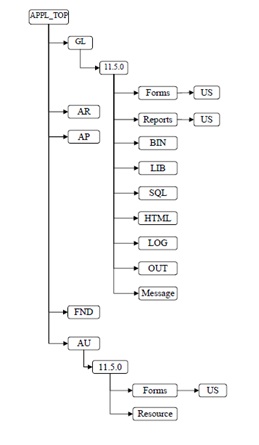What is Function?
A function is a part of an application’s functionality that is registered under a unique name for the purpose of assigning it to, or excluding it from, a responsibility.
What are the Function Types?
There are two types of functions:
a] Form (Form Function)
- A form function (form) invokes an Oracle Forms form.
- Form functions appear in the Navigate window and can be navigated to.
b] Subfunction (Non–Form Function)
- A non–form function (subfunction) is a securable subset of a form’s functionality: in other words, a function executed from within a form.
- Subfunctions are frequently associated with buttons or other graphical elements on forms.
Forms vs. Subfunctions?
- Forms appear in the Navigate window and can be navigated to. Subfunctions do not appear in the Navigate window and cannot be navigated to.
- Forms can exist on their own. Subfunctions can only be called by logic embodied within a form; they cannot exist on their own.
- A form as a whole, including all of its program logic, is always designated as a function. Subsets of a form’s program logic can optionally be designated as subfunctions if there is a need to secure those subsets.
Advantages of Form Functions
If you want to open the Form in different modes without creating the copies, we can create a Form Function and pass the parameters based on the requirement. The parameter, which is passed in the form function, must be already defined in the form while designing the Form. A menu can be assigned to more than one Responsibility. If you want to restrict some of the Forms from a particular responsibility, we can include Form Function of those Forms in Menu Exclusions of the Responsibility.
What are the standard function types?
- FORM — Oracle Applications form functions are registered with a type of FORM.
- SUBFUNCTION — Subfunctions are added to menus
- JSP — JSP functions
- WWW –PL/SQL functions
- WWK –PL/SQL functions that open a new window
- WWR or WWL –used for some products in the Oracle Self–Service Web Applications
- WWJ –OA Framework JSP portlet
- SERVLET –Servlet functions
- DBPORTLET –Database provider portlet
- WEBPORTLET –Web provider portlet


Recent Comments